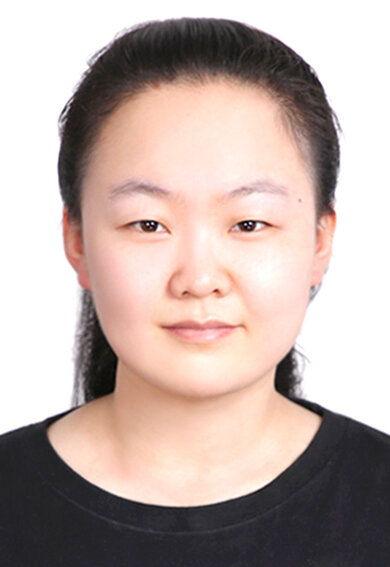Min Qiao

I studied for my Bachelor in Biotechnology in Guangdong, China, I learned some basic knowledge about physiology and pathophysiology of erythrocytes, especially about Thalassemia since it is one of the high incident genetic diseases in Guangdong.
Reason for joining
I have watched some of my family members suffered from chronic diseases for years. The strict lifestyle and endless treatment deprived them of all their happiness and they were not like a real human but walking dead. Since then, I decided to devote myself into human biology field and I hope one day I could contribute to a research which could help some patients get their life back.
When I studied for my Bachelor in Biotechnology in Guangdong, China, I learned some basic knowledge about physiology and pathophysiology of erythrocytes, especially about Thalassemia since it is one of the high incident genetic diseases in Guangdong. Tragic stories of those patients and their families touched me. I hoped to knew this disease more so I might be able to contribute to find a new and inexpensive treatment to help them. Unfortunately, there was little program focus on Thalassemia in biology field in China.
Although being educated in Human Biology fields in Denmark, I still felt I need further training in independent scientific research, critical thinking, and advanced biotechnology techniques to become a qualified scientist in human biology field and to achieve my dream. Besides, I do like the academic environment in Europe.
I started to search the PhD position in my favorite European countries like Germany, Denmark, Finland and etc. By a chance, I saw EVDIENCE program and it is about erythrocyte. It reminded me of the time when I learnt Thalassemia and how badly I want to help those patients. I felt this is the chance I was dreaming about and I shouldn't let it go. The project provided by Professor Lars Kaestner titled "In vitro and In vivo investigation of red blood cells in physiologic and pathophysiologic animal models and comparison with human pathophysiology looked so attractive. Microscope techniques was one of the cool advanced methods which I only get to know in text book. The application of animal models was also the skill I would like to improve. Thus, I applied this position. Luckily, Professor Lars took me as his PhD student for this project.
Now, I am working on two projects. One is the effects of Yoda1 on intracellular calcium concentration by imaging with confocal microscope. Another one is the application of two-photon microscope on intracellular calcium concentration quantitative. I also got a chance to participate in lectures about laser to get a better idea of my experiment and data analysis.
Expectations
I hope I can achieve my goal during my PhD training, to develop independent scientific thinking and critical thinking. Also I can manage the microscope technologies and get to learn more advanced biotechnology skills. After this adventure, I can be a qualified scientist and I could be able to use my research to help the patients and bring them a happy life without pain and suffering.
Updates
I am ESR 1 (Early Stage Researcher) and I am working with Professor Lars Kaestner in University of Saarland. My project mainly about two things. One is ion channel activities and cooperation in erythrocytes. I used Fluo-4 as calcium indicator to observe the intracellular calcium change when I applied Piezo 1 channel activator and inhibitors of other ion channels and pumps to regulate ion exchange within red blood cells. Another topic of my project is using two-photon microscope to build a new method to measure intracellular calcium concentration. I also participate some intracellular calcium measurement of patients with rare blood diseases or gene mutations. The scientific projects are challenging and fun because it does not only focus on the biology as other labs do, but it also requires physical methods, which is new and interesting to me. The comprehensive background of projects helps me to think out of the box and open my horizon.
The whole program is a network with 17 fellows on erythrocytes related topics. The communication among the network is a huge advantage to a PhD student. I could work with people from different countries and get to in touch with many great institutes. I also get chance to communicate best scientists in this fields with varies background in Europe. It helps me to understand my project in different aspects and learn from them. I am also lucky that there are another two ESRs in the same institute. It is helpful for me to get over the difficulties about settling down and starting advanced journey in science, especially during pandemic time.
Although due to COVID, there are not many conferences and communications on site. I still got a chance to do my secondment in Sanquin, Netherlands, within the network. I did Western Blot experiment about TRPV2 expression on red blood cells there. Different lab environment and conducting experiment with some advanced equipment made the boring pandemic life much more fun. The most important part was that I can meet new people, work together with another ESR from the network and learn from each other. At the same time, I stayed with a PI (Principal Investigator) there. Staying close to a senior scientist, it is a great chance to learn from her about my project in different aspects and get some advice of scientific research.
There has been regular online meetings for all ESRs to present their projects and discuss. That is a great way to know new studies of red blood cells and different techniques. It also gives me a chance to find out interested methods to learn during my secondment. This is a special opportunity within the program.
The fellowship is a great platform for me as PhD student, to get involved to the red blood cell community and know wonderful people, as well as achieving nice results in my research area. There wouldn't be any better opportunities than Marie Sklodowska-Curie Fellowship.
